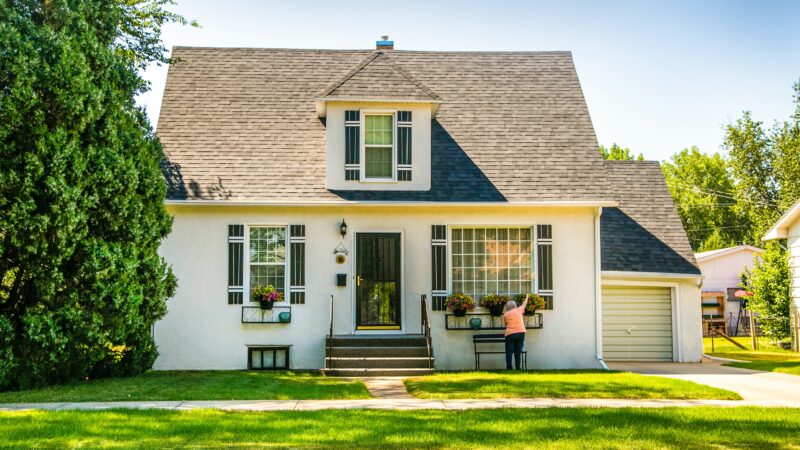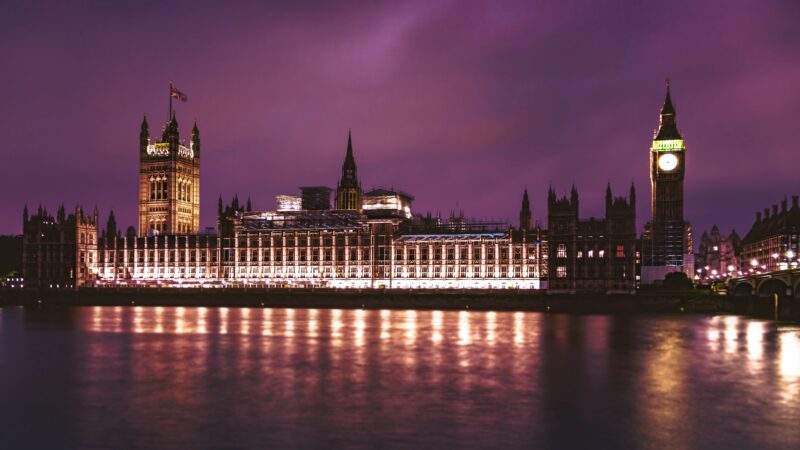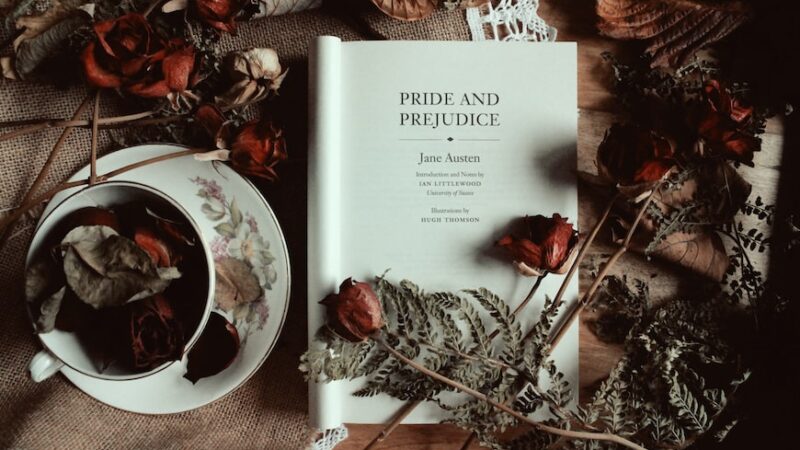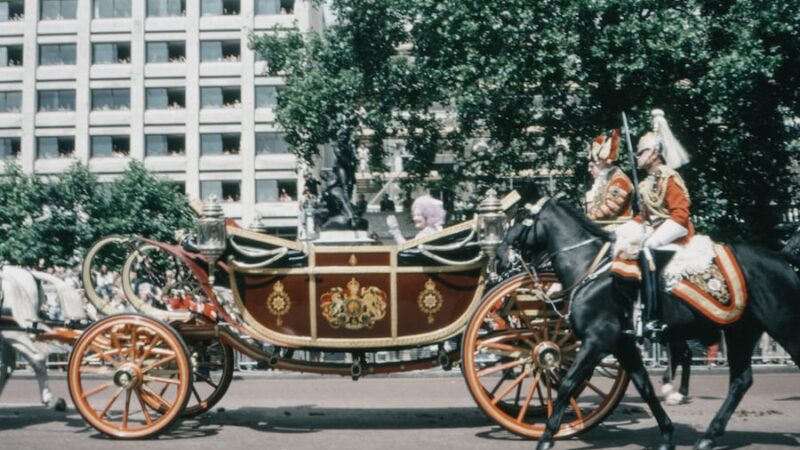Forget The Greenbelt: YIMBYs Should Focus On Permitted Development
Britain needs housing. We all (aside from a tiny minority who don’t understand the concept of household formation) know this. And those of us who want that housing all know exactly who is to blame for the lack of supply: those dastardly NIMBYs and their unenlightened self interest in keeping property prices high.
Perhaps, though, that’s not the whole story. Almost everyone agrees that we need more homes, even if they don’t agree that those homes need to be near them. When you look at opposition to new housing, a pattern emerges – most opposition to housebuilding is opposition to concreting fields with deanoboxes, rather than an ideological opposition to adding any new homes at all. The only organised and large scale opposition in Britain appears to be over greenfield development. Sure, brownfield developments in city centres always get a few people holding signs outside them to oppose building a four storey tower block, but there is no Council for the Protection of Urban England pushing to keep brownfield land as brownfield. Brits like their green and pleasant land and wish to keep it; they aren’t usually so bothered by a couple of houses being built on a garden unless they live right next door and have a feud with their neighbour already.
And who can blame them? The costs of greenfield development, both aesthetically (loss of visual appeal replaced by boxes on concrete) and logistically (increased demand on infrastructure) fall on existing residents, whilst the benefits flow to the landowners and developers (who make the profit) and new residents (who now have a place to live). Compare this to the construction of a backyard rental cottage: the primary beneficiary of the development is the same person who bears most of the costs, so there is less incentive to oppose it, and the cottage is tucked away behind the existing house, where it does not alter the look of the area.
The government expanded permitted development quite a lot in 2020 with little pushback, enabling the owners of houses built between 1948 and 2018 to add additional storeys to their homes. Expanding permitted development rights therefore seems to be a politically feasible route to go down. More feasible at any rate than implementing a zoning scheme and zoning large swathes of greenbelt for new housing. Whilst the standard development pattern benefits landowners at the expense of homeowners, permitted development rights benefit homeowners. Certain options in particular would benefit homeowners with larger houses, who tend to be the voters that the government most wishes to keep onside.
There are a couple of changes that would be natural extensions to the existing policy. First, the right to add a mansard roof to any property not in a conservation area. At present, you are allowed under the permitted development rules to add an ugly dormer to most houses, regardless of their age, and to add a whole floor to many of them. Mansard roofs are more aesthetically pleasing than massive flat dormers, and are significantly cheaper to construct than a full additional storey. This would enable many presently small homes, that are amongst the cheapest of properties for those wishing to get on the property ladder, to be made more suitable for families.
Secondly, the right to add an annexe; or as they are usually called by urbanists and planners, an Accessory Dwelling Unit (ADU). This is not as radical as it might seem – AFAIK there is nothing that stops one from renting a large ensuite bedroom with an external entrance and additional washbasin, that is totally not a studio flat (no oven, see! It’s not the landlords job to forbid fridges and hotplates and air fryers.) to a lodger, and the only difference between this and a studio flat is the presence of an oven. This would simply expand an existing right to include other extensions such as outbuildings.
The Cameron government introduced a rent a room scheme to try and take advantage of an oversupply of housing (in the sense of bedrooms per person; whilst dwellings per household have gone down, the number of rooms per person have increased since 1960). This is a good direction, but many people do not wish to share their homes with strangers. If part of the home can be carved out into an ADU and rented out, however, that would present a very different proposition that would hopefully see more uptake.
Adding accessory dwellings could have significant impact on rents. As many of the houses that would be suitable for this are owned by pensioners, this would provide an additional source of income – it is a common complaint from pensioners that they aren’t getting enough money. Here would be their chance to fix this. With an increasing supply of rental properties available, there would be reduced pressure on existing homes, which would return to the market for would-be homeowners to purchase. By making it easier and more predictable to add a flat or cottage for granny, the constraint of supply of smaller homes that prevents many people from downsizing would be done away with – those looking to become grandparents could either sell their home to help their children afford to buy, or let their children start families in the existing house.
Permitted development is not unrestricted development, and there’s no reason ADUs would necessarily mean permitting the construction of a large new house on the totality of the garden (existing rights do not allow more than half the curtilage to be taken up by outbuildings anyway). Reasonable restrictions may be: no more than fifty square metres, no more than two tenants (most households are one or two person), one ADU per dwelling, and perhaps councils having the power to require a single parking space.
The political will is not there to straight up abolish the Town And Country Planning Act, and doing so would most likely result in a deluge of poor quality homes and neighbourhoods to meet the pent-up demand. Seventy-five years of planning restrictions have warped housebuilding, it will take time for this to be fixed. But the political will is there to chip away at it within existing neighbourhoods. YIMBYs need to choose their battles carefully – forget the greenbelt for now, pick the fights where there is a hope of winning.










How Diversity Hiring has ruined TV
Over the past few decades, the media has been obsessed with characters representing minorities in society who haven’t received much recognition on television before. The hope is that a person of colour might see a black Hermione or a girl might see a female Doctor Who and think “that could be me!” and feel represented in British Society.
Like most of British society, I hold the view that unless a character’s race is an important part of their role, we should give actors parts based on their skill and performance. I also believe that casting directors should be able to have the freedom to cast whoever they want in their movies. After all, if they make the wrong decision they will pay the price. For example, the Ghostbuster reboot which had an all-female main cast was widely reported to be a flop, warning future filmmakers of the consequences of casting on diversity for diversity’s sake.
The original argument was for minorities to be proportionately represented on television as they are in British society. However, same sex attracted people and ethnic minorities are now over represented on screen. BAME people account for 13% of the national workforce but 23% of on screen roles. Lesbian, gay and bisexual people are nearly twice as likely to appear on television.
In addition, the presence of LGBT and ethnic minorities on television is often dedicated to side characters. On some occasions, the producers try to lump as many diversity points onto one character while still having a white straight protagonist. For example in the series Sex Education, the three main people of colour are Eric, Ola and Jackson. Two of these characters have had same sex relationships and the other has two mums and attempts to get into a relationship with a “non-binary” Sudanese-American character introduced in the last season. Meanwhile, the two main characters, Otis and Maeve, are both white and straight. This identity points dumping ruined the character of Jackson, who is already dealing with the conflict of being a high achiever who can’t meet the expectations that he and his mums have for him. Instead of trying to figure out who he is, his main issue this season is getting with a rebellious “non-binary” girl who is annoyed at him for seeing her “as a girl” instead of “non-binary”.
This isn’t to say that there can’t be shows and movies which have BAME and LGBT people as the majority of the cast. It’s not unrealistic for a show about people in London for example to have an ethnic minority cast. For example, the show Chewing Gum, featuring a black main cast, was extremely funny and well produced. The show was created by Michaela Coel who grew up in East London so the reason behind the diversity casting is because of her own experience and background, rather than some white middle class liberal who wants to gain diversity points. This contrasts to the announcement of there being a production of Anne Boleyn on which the actress who plays Anne Boleyn is black. The show’s creators admitted to adopting a “race conscious” approach, rather than picking who could play a realistic Anne Boleyn or even a colour-blind casting of who is best for the role.
However, it seems that identity and virtue signalling is everything nowadays. The left even are trying to make horror villains gay icons. Vox published an article on “How the Babadook became the LGBTQ icon we didn’t know we needed”. In addition, even Chucky has shown his respect for the LGBT community as he accepts his “gender fluid” child, stating “I’m not a monster”. It’s odd that the LGBT community are so keen to relate themselves to monsters who are hostile towards children. Surely these aren’t characters you want to represent you?
Most recently, Doctor Who has fallen victim to diversity casting. Recently, Sex Education’s Ncuti Gatwa has been casted as the next Doctor, taking the place of Jodie Whittaker. In addition, a new character called Rose will be played by a biological man who calls himself a transgender woman. Many have scoffed at those who have had complaints about the Doctor and his companion changing identity. For example, The Guardian wrote:
“There is no way on earth that a shapeshifting ancient alien god and an interdimensional explorer trapped in a parallel dimension should be played by anything other than a white British guy and the woman from I Hate Suzie respectively.”
However, this shifts from the original idea that minorities need to be represented for people to see themselves in the characters. Modern media holds the conflicting ideas that identity is everything and to act ‘colour blind’ is racist and that a character can be any colour. Not only is it important that we display the voices and experiences of minorities, but it doesn’t matter if we replace traditionally played white characters with ethnic minorities.
Personally, I don’t need to share the same identity as a character in order to relate to them.When I was younger I used to dress up as Harry Potter and got offended when I went to The Making of Harry Potter and somebody thought I was dressed up as Hermione. That is because I identified with the character of Harry Potter. It didn’t matter that he was a boy as I aspired to be as brave as him when I was young.
Though I’m doubtful, I hope that the media sees the error of its ways and focuses on providing thought provoking entertainment that doesn’t rely on progressive pandering. Being purely identity-focused on unchangeable characteristics such as race, gender and sexuality is creating a generation full of narcissists. A movie shouldn’t be good because it has people who look like you; it should be good because of the message it sends.
Image Credit